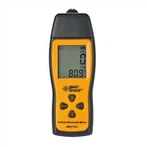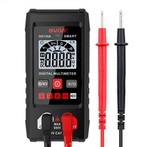Anemometer and thermal anemometer measurement methods and applications
An instrument for measuring air flow velocity. There are many types of it. The most commonly used one in meteorological stations is the wind cup anemometer. It consists of three parabolic cone empty cups fixed on the bracket at 120° to each other to form the sensing part. The concave surfaces of the empty cups all face one direction. The entire sensing part is installed on a vertical rotating axis. Under the action of wind force, the wind cup rotates around the axis at a speed proportional to the wind speed. Another type of rotary anemometer is the propeller anemometer, which consists of a three- or four-blade propeller as the sensing part. It is installed on the front end of a wind vane so that it can be pointed in the direction of the wind at any time. The blades rotate around a horizontal axis at a speed proportional to the wind speed. Commonly used types of anemometers include: anemometers based on the principle of correlation between the heat dissipation rate of heated objects and wind speed; ultrasonic anemometers based on the principle that the propagation speed of sound waves is affected by wind speed and therefore increases and decreases.
The flow velocity measurement range of 0 to 100m/s can be divided into three sections: low speed: 0 to 5m/s; medium speed: 5 to 40m/s; high speed: 40 to 100m/s. The thermal probe of the anemometer is used for measurements from 0 to 5m/s; the wheel probe of the anemometer is ideal for measuring flow rates from 5 to 40m/s; and the pitot tube is used to obtain the best results in the high-speed range. . (Shanghai Yiou Instrument Equipment Co., Ltd.) An additional criterion for the correct selection of the flow velocity probe of the anemometer is the temperature. Usually the operating temperature of the thermal sensor of the anemometer is about +-70C. The wheel probe of the special anemometer can reach 350C. Pitot tube is used above +350C.
The main uses of anemometers are (1) to measure the speed and direction of average flow. (2) Measure the pulsation speed and spectrum of the incoming flow. (3) Measure the Reynolds stress in turbulent flow and the velocity correlation and time correlation between two points. (4) Measure wall shear stress (usually done by using a hot film probe placed flush with the wall, the principle is similar to velocity measurement). (5) Measure the fluid temperature (measure the change curve of the probe resistance with the fluid temperature in advance, and then determine the temperature based on the measured probe resistance. In addition, many professional uses have been developed.






